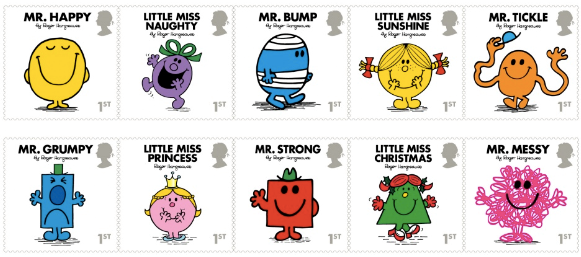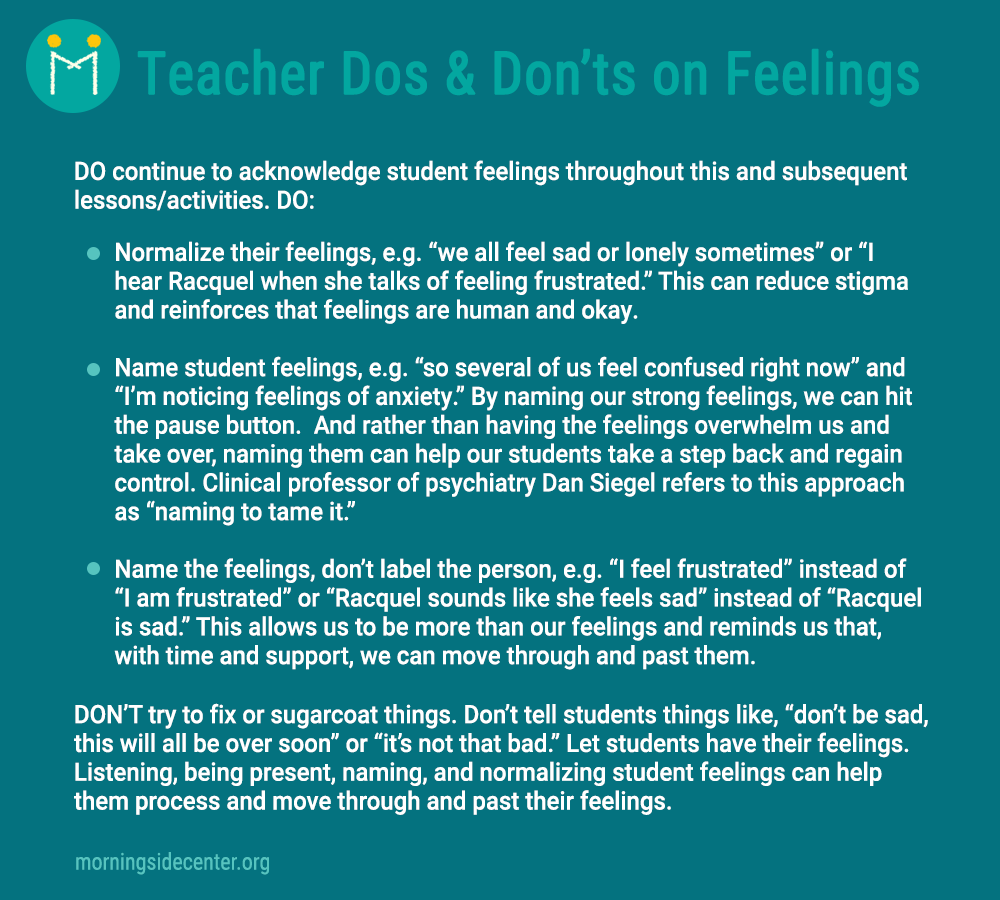To the Teacher:
In these uncertain, stressful times of physical distancing, coming together and connecting socially and emotionally is especially important. For young people to see and connect with their peers can be ray of light for some and a real lifeline for others. They might connect over things that spark joy and gratitude (like seeing each other on video or hearing each other’s voice) or over things that bring on more challenging feelings (like frustration, fear, uncertainty, anger, hurt and grief).
So create a remote space that’s welcoming and supportive for students to come together. Because as Mr. Rogers said: “It is only natural that we and our children find many things that are hard to talk about. But anything human is mentionable and anything mentionable is manageable. The mentioning can be difficult, and the managing too, but both can be done if we’re surrounded by love and trust.”
As the pandemic moves through our cities and across our country, family members, friends, and neighbors will get sick. Most will pull through, but others will die. This is going to be a reality for your students and school communities, if it isn’t already. This means that the kind of space you are creating today should, when possible, intentionally focus on the “love and trust” that Mr. Rogers mentions above.
Materials: Paper and a pencil, pen, and/or markers
Preparation (optional): Invite a student or two, ahead of time, to make a video of themselves reading Rumi’s The Guest House out loud to play at the start of your gathering.
A Lesson on Feelings and Language
Opening Ceremony
Play the video of students reading the Rumi poem The Guest House (made ahead of time) or ask a student, or two, or three to read the poem out loud, live, at the start of your gathering.
Post the text of the poem for students to reference after the read aloud:
The Guest House
This being human is a guest house.
Every morning a new arrival.A joy, a depression, a meanness,
some momentary awareness comes
As an unexpected visitor.Welcome and entertain them all!
Even if they’re a crowd of sorrows,
who violently sweep your house
empty of its furniture,
still treat each guest honorably.
He may be clearing you out
for some new delight.The dark thought, the shame, the malice,
meet them at the door laughing and invite them in.Be grateful for whoever comes,
because each has been sent
as a guide from beyond.— Jalaluddin Rumi, translation by Coleman Barks
Have students reflect on the poem. Ask them to share:
- What about the poem resonates with you?
- How are you feeling right now? Remember, you might be experiencing more than one feeling at a time. Feelings can be complex that way.
If you sense more sharing is needed, ask students to share:
- Any connections, reflections, or additions to what their peers shared just now.
If you have time, continue to the activities below. Alternatively, engage students in the Community Guidelines and Naming Our Feelings activity below in your next session together.
Community Guidelines
Talk with your students about the importance of coming together during this time of physical distancing, to connect socially and emotionally. We can connect in new ways, and be supportive of one another in our virtual advisory, crew, homeroom, or classroom community.
If you haven’t yet worked with students to come up with community guidelines for your online gatherings, consider doing it now. Ask students how they can make this space supportive. What do they need from each other? What do they have to offer each other? See these community guidelines from a Morningside Center online staff gathering as an example.
Naming Our Feelings
Share with students that we’ve likely all been on an emotional roller coaster ride during this period. Share a little about your own feelings during the pandemic, whether you’re feeling confusion, frustration, worry, or sadness. Share also the excitement, happiness, or gratitude you feel at seeing your students right now.
A recent article in New York Magazine’s The Cut, talks about a scientific theory that suggests we have infinite emotions, so long as we can name them. So New York Magazine asked its writers to identify new ways to feel. They came up with such words as:
Widgi: (“Wish I didn’t get involved”); pronounced wid-gee: Dread and regret, coupled with a desire to flee or disappear or take back your statement.
Ventastic: The fabulous and exhausting feeling right after a particularly animated and energetic venting session.
Instagrief: The destabilized sensation you get … when you have before you … something shareable, an adorable family moment, say, and you become caught between two impulses: the desire to be engaged inside the moment in a Zen way, to just experience it, and, at the same time, a desire to find your phone, get the camera on, and take a postable photo.
The current coronavirus pandemic gives us all the opportunity to tune into how we’re feeling and maybe come up with our own words for any (new) feelings we are experiencing—including, perhaps, feelings that accompany our “cooped-up-ness” and distancing. Those living on top of each other might be feeling “crampritation” and for those spending much time by themselves “solitiredness.”
Have students consider some of the new and complex emotions they’ve been feeling in recent weeks. Give them a few minutes to consider giving those feelings a new name or one already in existence. Encourage the use of a thesaurus as students try to name their feelings.
Next, ask students to share out their feelings on the virtual whiteboard, in the chat function, or possibly by asking them on a sheet of paper to write and illustrate their feelings, then hold these up to the camera for all to see. Next, ask students one after the other to share and explain their feeling(s) and what, if anything, brought up these feelings.
Before wrapping up the activity, acknowledge student feelings. Say something about feelings being part of the human experience—this guesthouse for feelings. There are no good or bad feelings, and it’s okay not to feel okay. In fact many people today are not feeling okay. That’s a normal reaction to a difficult and stressful situation. Encourage students, though, to reach out to trusted friends and/or adults to talk about and process their feelings, especially when feelings get to be too much. We’ll make time for this, as we get together in the weeks to come as well.
Closing Ceremony
Ask students to give you thumbs up, down, or in between to indicate how they’re feeling. Or, ask students to give you a thumbs up, down, or in between to indicate how they were feeling at the start of the lesson, then give you a second thumbs up, down, or in between to indicate how they’re feeling now. Note if the session helped shift and/or lift students’ mood.
Extension Activities
1: Emotions of Pixar
Show the following clip Emotions of Pixar clip by Lindsay McCutcheon. Ask students to either share what character in the clip resonated with them and why, or to make connections to the earlier discussion around the Rumi poem, The Guest House.
2: Drawing Your Feelings
New York Magazine illustrated the feelings writers came up with by drawing inspiration from the iconic 1970s and 80s book covers of the Mr. Men and Little Miss series of children’s books by English author Roger Hargreaves, which were reproduced as stamps for the British Royal Mail.
Invite students to draw their feelings with similarly simple illustrations using basic shapes and colors.
This activity was shared by Morningside Center Staff Developer Lauren Neidhardt.

